Lucio Fontana Concetto spaziale 1962 Oil on canvas. 60 × 50 cm (23 5/8 × 19 5/8 in). Signed ‘l. fontana’ lower right; further signed and titled ‘l. fontana / Concetto spaziale’ on the reverse.
Provenance Galerie Serge De Bloe, Brussels, from whom acquired by previous owner Literature E. Crispolti, Lucio Fontana catalogue raisonné, vol. II, Brussels, 1974, no. 62 O 38, p. 118–19 (illustrated); E. Crispolti, Lucio Fontana catalogo generale, vol. I, Milan, 1986, no. 62 O 38, p. 398 (illustrated); E. Crispolti, Lucio Fontana catalogo ragionato di sculture, dipinti, ambientazioni, vol. II, Milan, 2006, no. 62 O 38, p. 583 (illustrated) Catalogue Essay “A butterfly in space excites my imagination: having freed myself from rhetoric, I lose myself in time and begin my holes” Lucio Fontana Lucio Fontana created an entirely new pictorial language, and in doing so, placed himself at the forefront of the post-war European avant-garde movement. Having already contributed to several manifestos between 1947 and 1952, Fontana was the founder of Spazialismo, or Spatialism, which explored the concept of space and its representation without recourse to the traditional means of perspective and illusion. In Fontana’s work, this theory culminated in his renowned body of works known as Concetti spaziali, to which this work belongs. These works, which Fontana began in 1948, mark and embody the extent to which Fontana was able to transcend the boundaries that define sculptures and paintings in his search for his new pictorial language. This search, conducted in the post-war years, has often been linked to Fontana’s declaration that painting after Nagasaki and Hiroshima was not possible anymore, echoing Theodor Adorno’s declaration that it was barbaric to write a poem after Auschwitz. Although Fontana was politically aware and certainly influenced by the world around him, such as the aftermath of the Second World War or the voyage of man into space, his work is not specifically about politics. Rather, while his work can be seen as a form of social, visual and historical revolution, it was, above all, a rebellion against a dominating artistic tradition and heritage in the struggle for a new understanding of space. This went beyond a simple synthesis of sculpture and painting – Fontana freed himself completely from the limitations of two-dimensional space and broke into a new dimension. At the core of the Spatialist movement’s investigation of a new space lies in the grasp of infinity. This exploration of the space ‘behind’ the surface was very much a contemporary concern in the 1960s, especially since Yuri Gagarin’s space flight, an event which made people re-evaluate their understanding of the world and its place in the universe, and shift their focus towards time, matter and space. It made a great impression upon Fontana too. The exploration of space, however, was not just a scientific advancement for Fontana – he also saw it in more mythical terms. He believed that knowledge of the vastness of the cosmos would make human beings more aware of their insignificance, through which man would be able to become like God, completely stripped of their materialistic dependency. This emancipation and spiritual awakening would ultimately lead to the end of the world. This Spatialist concept went further and prophesied a redefinition of religion by the advance of science. In his important series of Concetto spaziale, called La Fine di Dio, Fontana uses the egg shape, which has long been the symbol of birth, life, death and resurrection but also of unity and harmony, as well as an emblem for the exploration and consolidation of the cosmos. This concept of space and freedom from materiality is key to Fontana’s oeuvre. “The discovery of the Cosmos is a new dimension, it is the Infinite: so I make a hole in the canvas, which is the basis for all previous art, to search for an infinite dimension, an X which for me is the basis of all Contemporary Art” (the artist in an interview with Carla Lonzi in Carla Lonzi, Autoritratto, Bari, 1969, p. 169). In his investigation of this new space, and driven by an inexhaustible curiosity, Fontana, while not abandoning
Lucio Fontana Concetto spaziale 1962 Oil on canvas. 60 × 50 cm (23 5/8 × 19 5/8 in). Signed ‘l. fontana’ lower right; further signed and titled ‘l. fontana / Concetto spaziale’ on the reverse.
Provenance Galerie Serge De Bloe, Brussels, from whom acquired by previous owner Literature E. Crispolti, Lucio Fontana catalogue raisonné, vol. II, Brussels, 1974, no. 62 O 38, p. 118–19 (illustrated); E. Crispolti, Lucio Fontana catalogo generale, vol. I, Milan, 1986, no. 62 O 38, p. 398 (illustrated); E. Crispolti, Lucio Fontana catalogo ragionato di sculture, dipinti, ambientazioni, vol. II, Milan, 2006, no. 62 O 38, p. 583 (illustrated) Catalogue Essay “A butterfly in space excites my imagination: having freed myself from rhetoric, I lose myself in time and begin my holes” Lucio Fontana Lucio Fontana created an entirely new pictorial language, and in doing so, placed himself at the forefront of the post-war European avant-garde movement. Having already contributed to several manifestos between 1947 and 1952, Fontana was the founder of Spazialismo, or Spatialism, which explored the concept of space and its representation without recourse to the traditional means of perspective and illusion. In Fontana’s work, this theory culminated in his renowned body of works known as Concetti spaziali, to which this work belongs. These works, which Fontana began in 1948, mark and embody the extent to which Fontana was able to transcend the boundaries that define sculptures and paintings in his search for his new pictorial language. This search, conducted in the post-war years, has often been linked to Fontana’s declaration that painting after Nagasaki and Hiroshima was not possible anymore, echoing Theodor Adorno’s declaration that it was barbaric to write a poem after Auschwitz. Although Fontana was politically aware and certainly influenced by the world around him, such as the aftermath of the Second World War or the voyage of man into space, his work is not specifically about politics. Rather, while his work can be seen as a form of social, visual and historical revolution, it was, above all, a rebellion against a dominating artistic tradition and heritage in the struggle for a new understanding of space. This went beyond a simple synthesis of sculpture and painting – Fontana freed himself completely from the limitations of two-dimensional space and broke into a new dimension. At the core of the Spatialist movement’s investigation of a new space lies in the grasp of infinity. This exploration of the space ‘behind’ the surface was very much a contemporary concern in the 1960s, especially since Yuri Gagarin’s space flight, an event which made people re-evaluate their understanding of the world and its place in the universe, and shift their focus towards time, matter and space. It made a great impression upon Fontana too. The exploration of space, however, was not just a scientific advancement for Fontana – he also saw it in more mythical terms. He believed that knowledge of the vastness of the cosmos would make human beings more aware of their insignificance, through which man would be able to become like God, completely stripped of their materialistic dependency. This emancipation and spiritual awakening would ultimately lead to the end of the world. This Spatialist concept went further and prophesied a redefinition of religion by the advance of science. In his important series of Concetto spaziale, called La Fine di Dio, Fontana uses the egg shape, which has long been the symbol of birth, life, death and resurrection but also of unity and harmony, as well as an emblem for the exploration and consolidation of the cosmos. This concept of space and freedom from materiality is key to Fontana’s oeuvre. “The discovery of the Cosmos is a new dimension, it is the Infinite: so I make a hole in the canvas, which is the basis for all previous art, to search for an infinite dimension, an X which for me is the basis of all Contemporary Art” (the artist in an interview with Carla Lonzi in Carla Lonzi, Autoritratto, Bari, 1969, p. 169). In his investigation of this new space, and driven by an inexhaustible curiosity, Fontana, while not abandoning
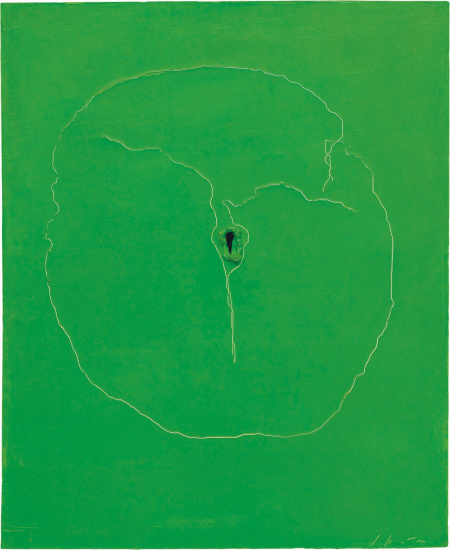
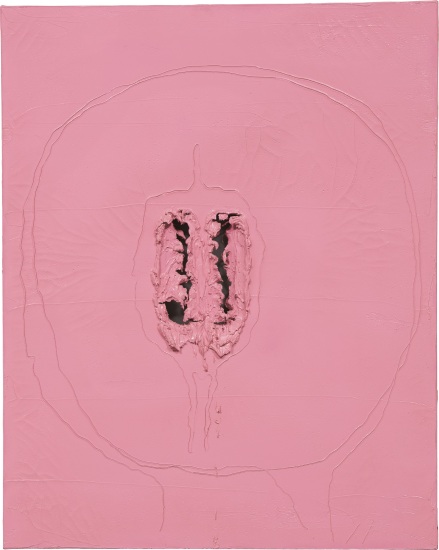
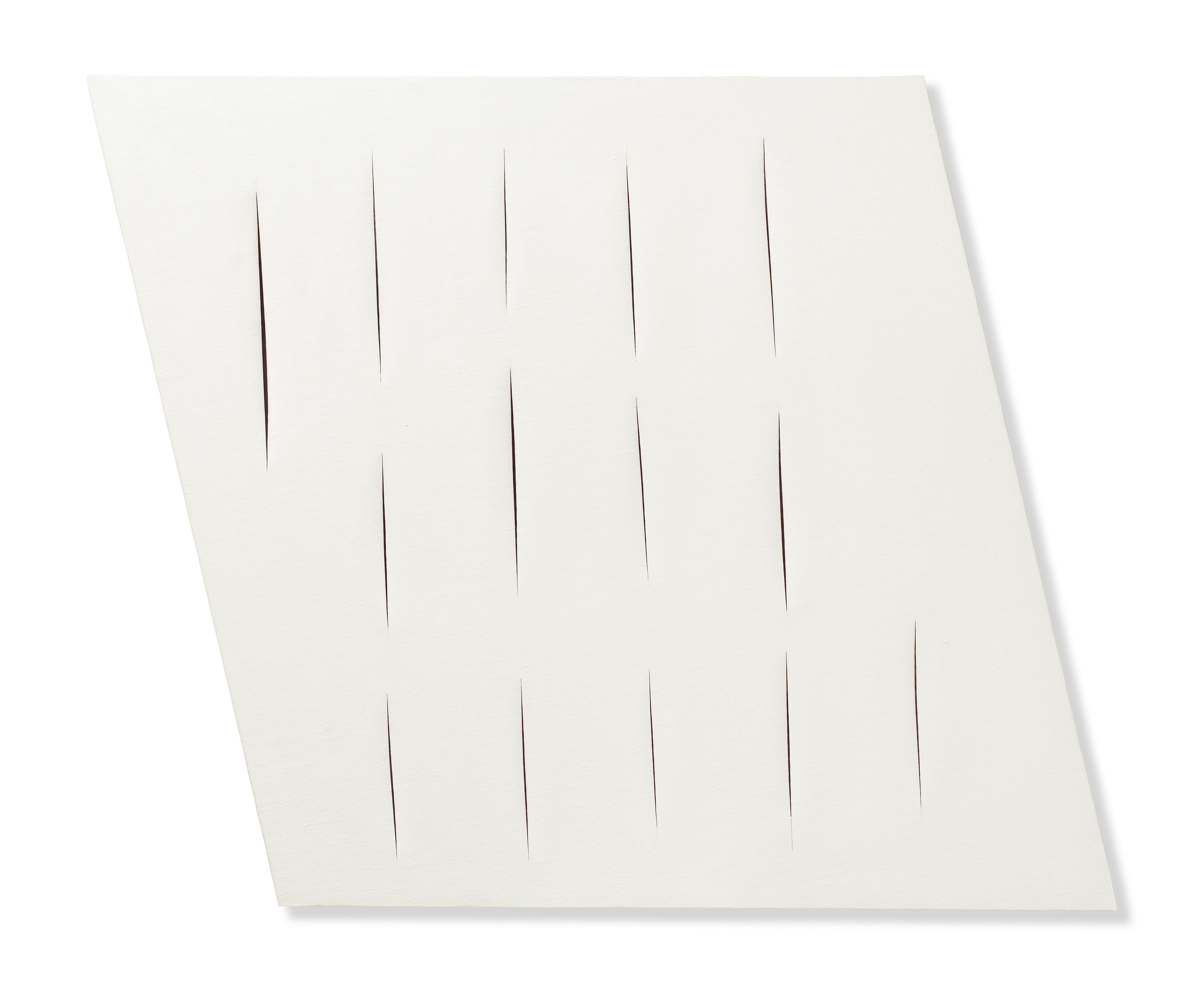
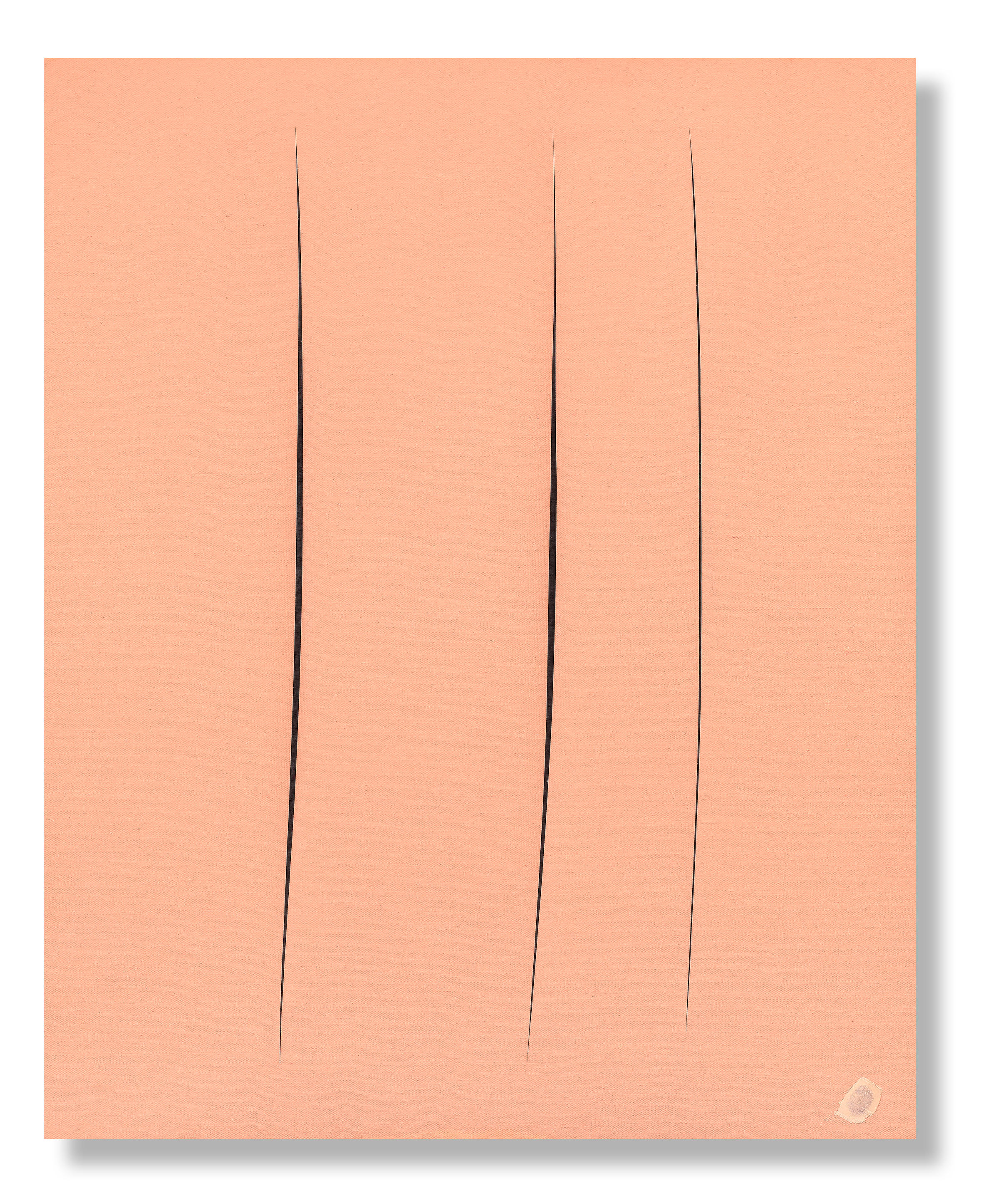
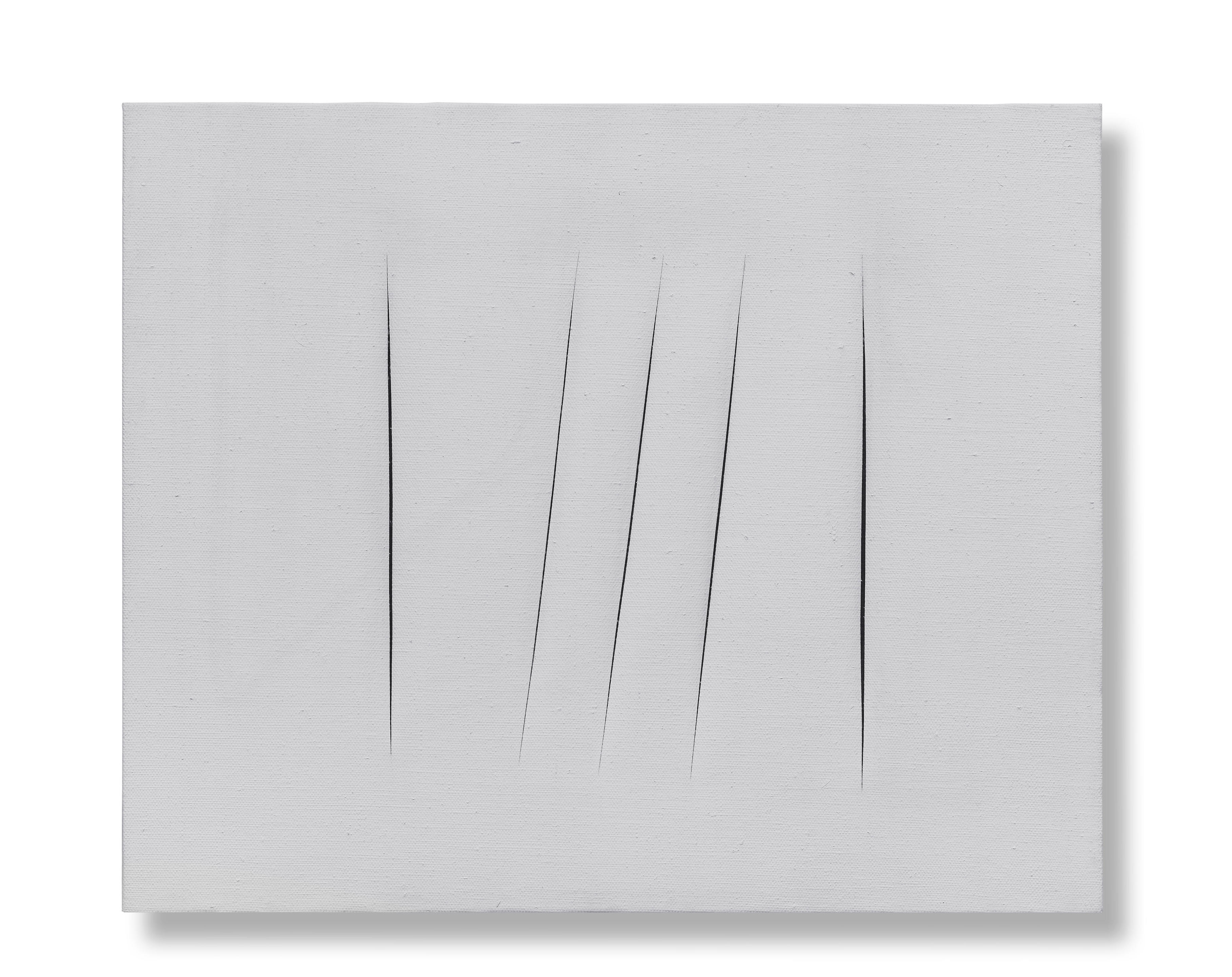



.jpg)
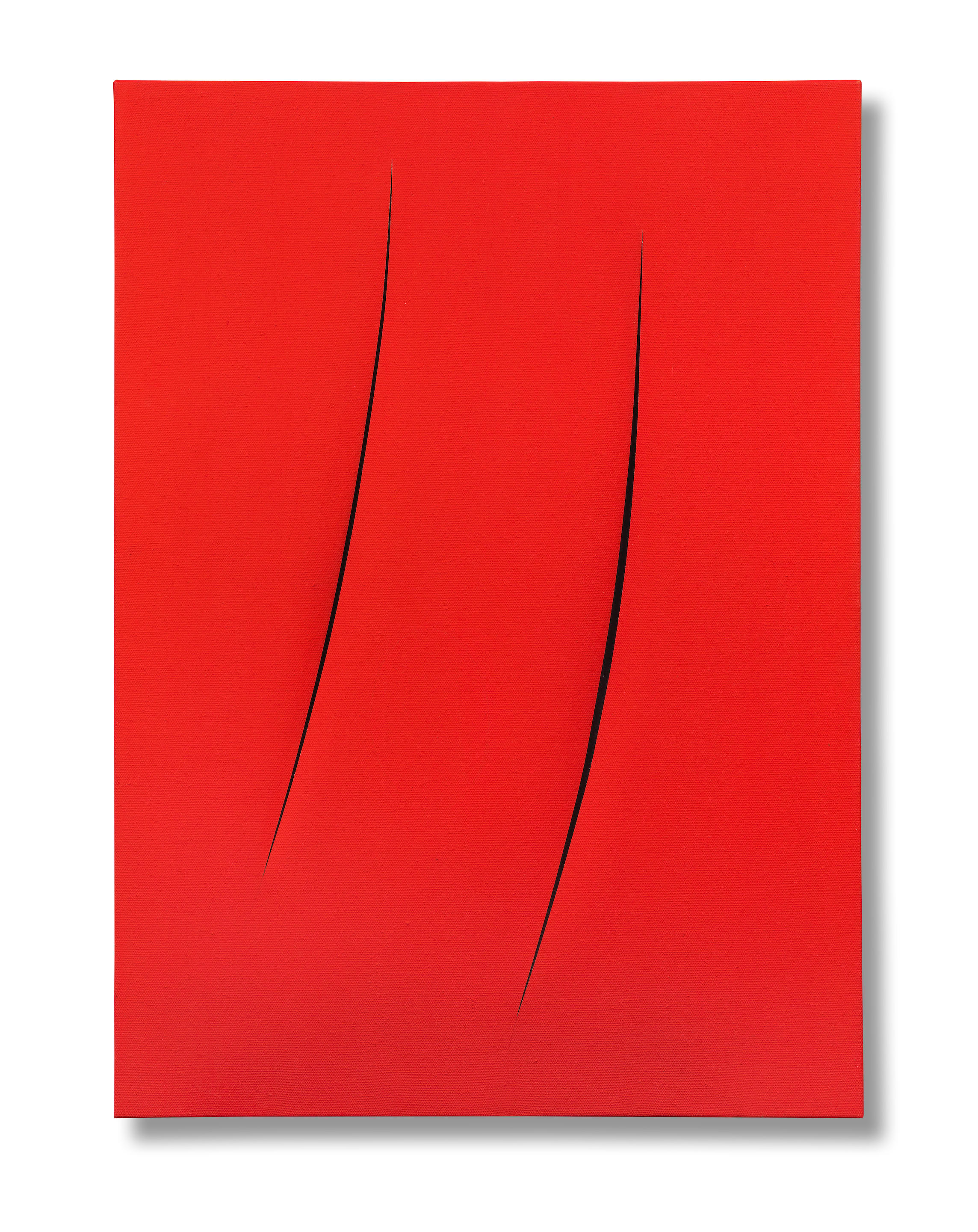
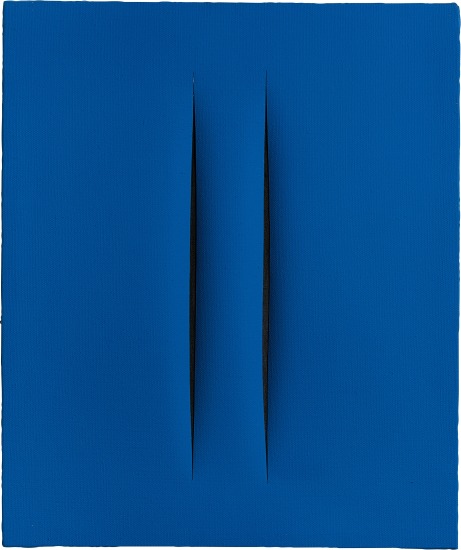
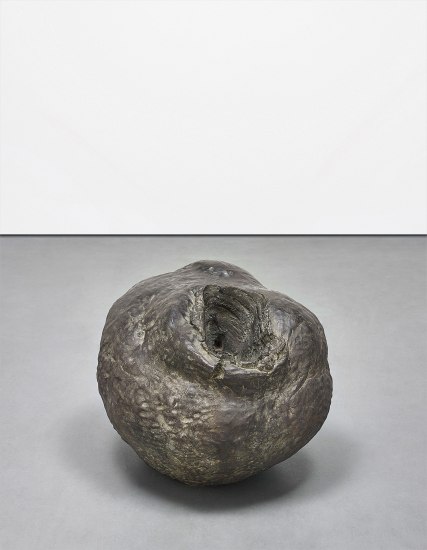

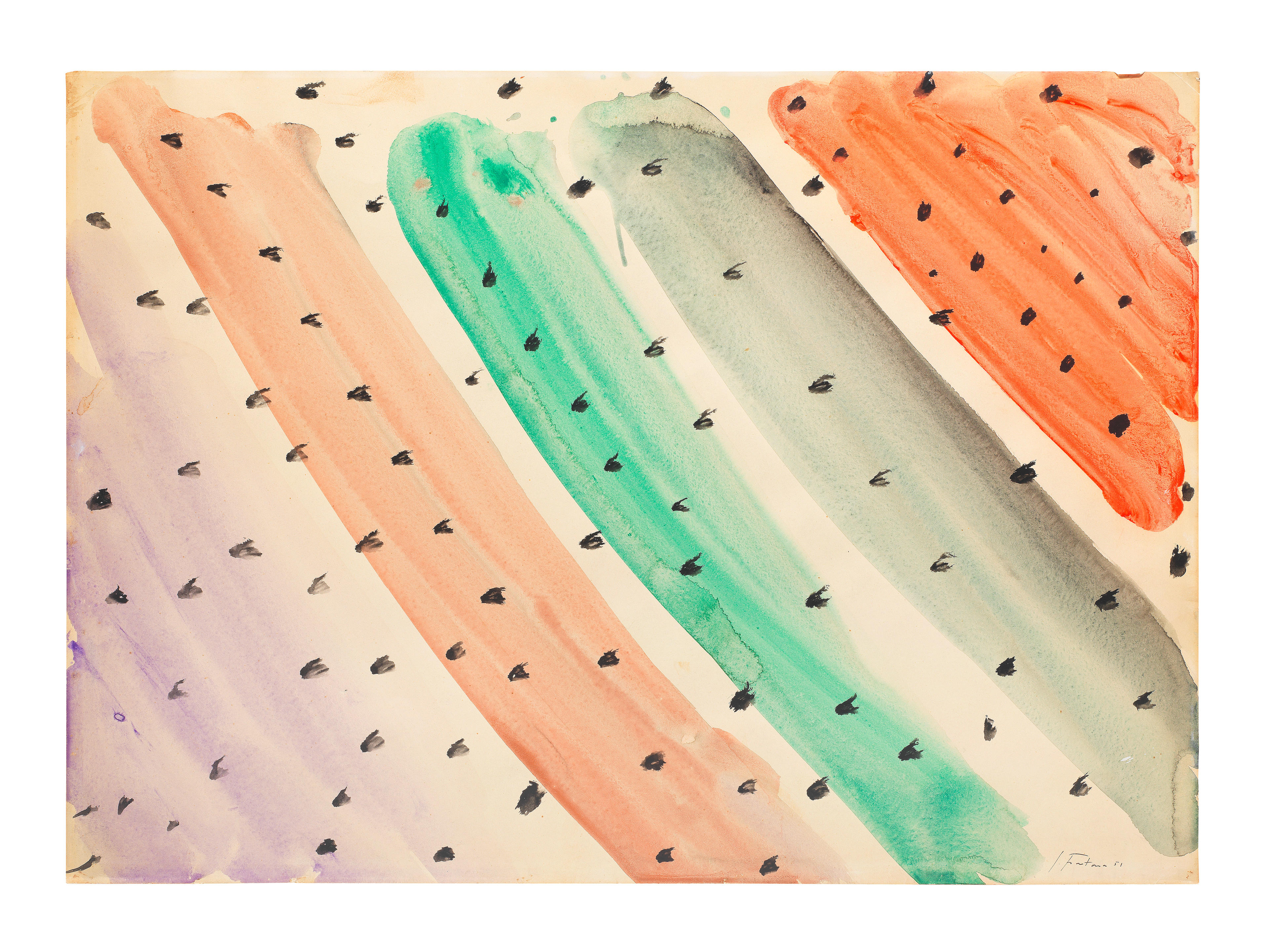
Try LotSearch and its premium features for 7 days - without any costs!
Be notified automatically about new items in upcoming auctions.
Create an alert